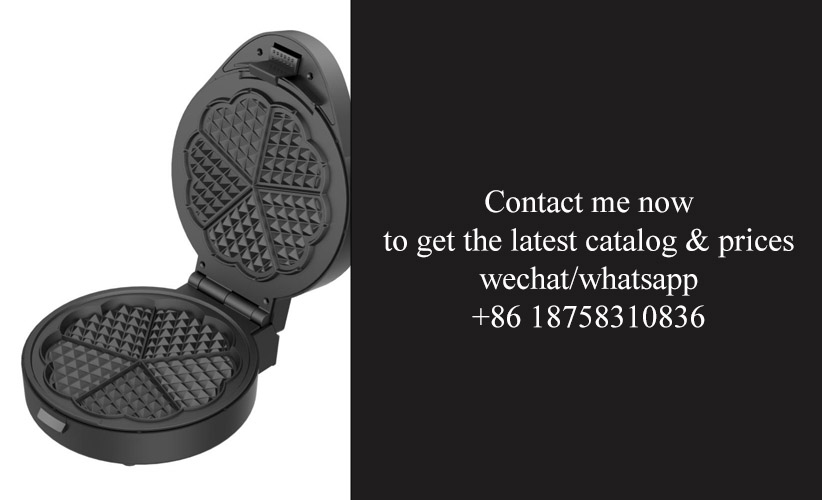Address
304 North Cardinal
St. Dorchester Center, MA 02124
Work Hours
Monday to Friday: 7AM - 7PM
Weekend: 10AM - 5PM
Address
304 North Cardinal
St. Dorchester Center, MA 02124
Work Hours
Monday to Friday: 7AM - 7PM
Weekend: 10AM - 5PM

As the kitchen evolves into a hub of culinary creativity, so too does the cookware that graces our countertops. One innovation that has garnered significant attention is the ceramic coated non-stick plate. This article delves into the world of these cutting-edge cookware pieces, exploring their manufacturing process, market trends, and the unique features that set them apart. We’ll also uncover the factors that drive consumer preferences and how ceramic coating is reshaping the competitive landscape of the cookware industry. Furthermore, we’ll examine the eco-friendly aspects of ceramic coating and offer insights into the future prospects of the ceramic coated non-stick plate market.
The culinary world has been revolutionized by the introduction of ceramic coated non-stick cookware, a game-changer that has transformed modern kitchens. Once dominated by traditional non-stick coatings, the industry has seen a shift towards a more durable, eco-friendly, and health-conscious option. This surge in popularity can be attributed to several key factors that have made ceramic coated non-stick cookware a staple in contemporary kitchens.
Gone are the days when non-stick pans were synonymous with Teflon, a coating that has come under fire for its potential health risks and environmental impact. Ceramic coatings, on the other hand, offer a natural alternative that is free from harmful chemicals like PFOA and PTFE. This shift towards a safer cooking surface has been met with open arms by consumers who are increasingly conscious of the health implications of their cooking tools.
The manufacturing process of ceramic coated non-stick cookware is a marvel of modern technology. These pans are crafted with a base material, often aluminum or stainless steel, which provides the strength and durability needed for everyday use. The ceramic coating is then applied in a series of layers, ensuring a non-porous surface that repels food particles and prevents sticking. This innovative process has led to cookware that not only performs exceptionally well but also boasts a sleek, stylish appearance.
One of the standout benefits of ceramic coated non-stick cookware is its exceptional durability. Unlike traditional non-stick coatings that can wear off over time, ceramic coatings are designed to last the life of the pan. This means fewer replacements and a more cost-effective solution for cooks who value their kitchenware. The scratch-resistant nature of ceramic also adds to its longevity, making it a practical choice for those who enjoy cooking at high temperatures or are prone to using metal utensils.
The eco-friendly aspect of ceramic coated non-stick cookware is another reason for its rise in popularity. Traditional non-stick pans can release toxic fumes when overheated, posing a risk to both the cook and the environment. Ceramic coatings, being free of harmful chemicals, eliminate this concern. Additionally, the durable nature of ceramic cookware means fewer end up in landfills, contributing to a more sustainable lifestyle.
In the realm of design, ceramic coated non-stick cookware has set new standards. The sleek, glossy finish of ceramic is not only visually appealing but also practical, as it makes cleaning a breeze. The smooth surface is perfect for basting and glazing, and the vibrant colors available add a pop of personality to any kitchen. This blend of aesthetics and functionality has made ceramic coated cookware a favorite among both professional chefs and home cooks.
When it comes to consumer preferences, the demand for non-stick cookware that is both non-toxic and long-lasting is on the rise. Home chefs are looking for products that not only make cooking easier but also align with their values of health and sustainability. Ceramic coated non-stick cookware checks all these boxes, offering a worry-free cooking experience that is as safe as it is convenient.
In the competitive landscape of the kitchenware industry, ceramic coated non-stick cookware has carved out a niche for itself. With a wide range of brands and products available, consumers have plenty of options to choose from. This competition has driven innovation, with manufacturers constantly seeking to improve their coatings and introduce new features that enhance the cooking experience.
The health and sustainability benefits of ceramic coated non-stick cookware have also made it a favorite among environmentally conscious consumers. As more people recognize the importance of reducing their carbon footprint, the demand for eco-friendly kitchenware continues to grow. Ceramic cookware is not only a responsible choice but also one that contributes to a cleaner and healthier planet.
Looking to the future, the market for ceramic coated non-stick cookware is expected to expand further. As consumers become more aware of the potential risks associated with traditional non-stick coatings, the demand for safer alternatives will only increase. Innovations in ceramic technology, such as enhanced heat conductivity and improved scratch resistance, are likely to drive this growth.
In conclusion, the rise of ceramic coated non-stick cookware is a testament to the evolving needs and values of today’s consumers. This innovative product has not only changed the way we cook but also how we approach kitchenware. As the market continues to evolve, ceramic coated non-stick cookware is poised to remain a staple in modern kitchens, offering a blend of performance, health, and sustainability that is hard to beat.

Nestled in the heart of the bustling kitchenware industry, ceramic coated non-stick plate factories have become beacons of innovation. These manufacturing facilities, often tucked away in industrial zones, are the unsung heroes behind the sleek, easy-to-use cookware that has taken kitchens by storm.
The factories are a blend of precision and creativity, where the art of cooking meets cutting-edge technology. Workers move with a sense of purpose, their hands deftly handling materials that will soon transform into kitchen essentials. The atmosphere is one of focused intensity, with machines whirring and workers engaged in meticulous tasks.
State-of-the-art equipment lines the walls, each designed to perform a specific role in the production process. From the initial mixing of ceramic particles with resins to the precise application of these coatings, every step is carefully monitored to ensure the highest quality. The factory floor is a testament to the balance between human skill and machine efficiency.
One of the key features of these factories is the emphasis on sustainability. Many have invested in eco-friendly practices, from sourcing raw materials to the energy-efficient methods used in manufacturing. This commitment to the environment is not just a trend; it’s a core value that drives the operations of these factories.
The raw materials, often sourced from around the world, are meticulously tested for purity and quality. The ceramic coating, in particular, is a blend of fine particles that create a non-stick surface that is both durable and safe. The factory’s engineers work tirelessly to refine the composition, ensuring that the coating is not only effective but also free from harmful chemicals.
The actual coating process is a marvel of modern engineering. Workers apply the ceramic coating to the plates using specialized equipment that ensures an even and consistent layer. This process, known as plasma spray, involves shooting the ceramic particles at high speeds onto the surface of the cookware, creating a durable and non-reactive layer.
Once the coating is applied, the plates undergo rigorous quality control checks. Each piece is inspected for any imperfections, and those that don’t meet the stringent standards are set aside for rework. This attention to detail is what sets these factories apart; they don’t just produce cookware—they craft it.
Innovation isn’t limited to the manufacturing process. Ceramic coated non-stick plate factories are also at the forefront of design. They collaborate with chefs and kitchen experts to understand the needs of modern cooks. This collaboration has led to the creation of cookware that not only performs well but also looks stunning on any kitchen counter.
The factories also invest in research and development, constantly looking for ways to improve their products. This could mean developing new types of coatings, exploring alternative materials, or even creating cookware that adapts to different cooking styles. The goal is to stay ahead of the curve, providing consumers with the best possible products.
The workforce in these factories is a diverse group of skilled professionals. From chemists who develop new coatings to designers who envision the next big thing in cookware, each individual plays a crucial role in the factory’s success. They are passionate about their work, driven by a desire to contribute to the evolution of kitchenware.
As the demand for ceramic coated non-stick plates continues to grow, these factories are expanding their operations. New facilities are being built, and existing ones are being upgraded to handle increased production. This expansion is not just about meeting demand; it’s about ensuring that the high standards of quality and innovation are maintained.
In conclusion, ceramic coated non-stick plate factories are more than just places where cookware is made. They are hubs of innovation, dedicated to creating products that make cooking easier, healthier, and more enjoyable. The meticulous craftsmanship, commitment to sustainability, and relentless pursuit of excellence are what make these factories the backbone of the modern kitchenware industry.

Ceramic coated non-stick plates have surged in popularity, and it’s not hard to see why. This innovative cooking surface offers a myriad of benefits that have won over both professional chefs and home cooks alike. Let’s delve into the advantages that make ceramic coating a standout choice in the kitchenware market.
One of the most celebrated features of ceramic coated non-stick plates is their exceptional non-stick properties. Unlike traditional non-stick coatings, which can degrade over time and release harmful chemicals when overheated, ceramic coatings are highly durable and maintain their non-stick qualities for years. This means less oil is needed for cooking, which not only saves on ingredients but also makes for healthier meals with fewer calories.
The health-conscious consumer will appreciate the fact that ceramic coatings are free from PFOA, PTFE, and other potentially harmful substances often found in Teflon coatings. This eco-friendly approach aligns with the growing demand for sustainable and safe kitchenware. Ceramic coated plates are not only safe to use but also easy to clean, as food particles typically slide off without scrubbing, reducing the need for harsh detergents and potentially damaging abrasives.
Another appealing aspect of ceramic coatings is their heat resistance. These plates can withstand higher temperatures than conventional non-stick pans, allowing for a wider range of cooking techniques. Whether you’re searing a steak or stir-frying vegetables, ceramic coated plates can handle the heat without losing their non-stick properties, which is a significant advantage over other types of cookware.
Durability is a key factor that has propelled ceramic coated non-stick plates into the spotlight. These plates are designed to last, withstanding scratches, chips, and general wear and tear better than their non-stick counterparts. This longevity means fewer replacements and a more cost-effective cooking experience over time. The scratch-resistant nature of ceramic also means that the surface remains smooth and even, ensuring consistent cooking results.
The aesthetic appeal of ceramic coated plates cannot be overlooked. The sleek, modern design of these cookware pieces complements a variety of kitchen styles, from contemporary to rustic. The variety of colors and finishes available means that there’s a ceramic coated plate to match any kitchen decor. This not only adds a touch of elegance to your kitchen but also serves as a conversation starter among guests.
In terms of versatility, ceramic coated non-stick plates are a true all-rounder. They are suitable for use on various cooktops, including induction, gas, electric, and ceramic glass. This universal compatibility means that you can use the same plate for a wide range of cooking methods without worrying about compatibility issues. It’s this versatility that makes ceramic coated plates a favorite among busy home cooks and those with limited storage space.
The ease of maintenance is another significant benefit. Cleaning ceramic coated plates is a breeze, as they are dishwasher safe and don’t require the vigorous scrubbing that can be damaging to other types of cookware. The non-reactive nature of the ceramic coating also means that the plates won’t impart flavors or odors into your food, ensuring that each dish retains its true taste.
For those who are environmentally conscious, ceramic coated non-stick plates are a greener choice. They are recyclable and can be safely disposed of at the end of their lifespan, minimizing the environmental impact compared to non-stick pans that contain potentially harmful substances. This eco-friendly aspect is increasingly important to consumers who are looking for sustainable alternatives in their everyday lives.
In conclusion, the benefits of ceramic coated non-stick plates are numerous. From their health and environmental advantages to their durability, versatility, and aesthetic appeal, these cookware pieces have earned their place as a hit in the kitchenware market. As consumers continue to seek out innovative and sustainable cooking solutions, ceramic coated plates are poised to remain a popular choice for years to come.

The process of creating ceramic coated non-stick plates is a meticulous blend of advanced technology and thoughtful design. Here’s a detailed look at how these innovative kitchenware items come to life:
The Base Material: The journey begins with selecting high-quality stainless steel, which serves as the foundation for the non-stick plate. This material is chosen for its durability and ability to withstand high temperatures, ensuring the longevity of the product.
Preparing the Steel: Once the stainless steel is chosen, it undergoes a series of preparation steps. This includes sandblasting to create a rough surface, which allows the ceramic coating to adhere better. After sandblasting, the steel is cleaned and polished to remove any impurities.
Application of the Coating: The ceramic coating is a key component that provides the non-stick properties. This coating is typically applied in several layers, each with its own function. The first layer is a primer that improves adhesion between the steel and the ceramic particles.
Spraying the Ceramic Particles: The ceramic particles are then mixed with a bonding agent, creating a slurry. This slurry is sprayed onto the steel plate in a controlled environment. The thickness of the coating is crucial and is carefully monitored to ensure it provides the right balance of non-stick performance and durability.
Curing Process: After the ceramic particles are applied, the plate is placed in an oven to cure. The temperature and duration of this curing process are carefully controlled to ensure the ceramic particles melt and bond with the steel, creating a seamless and durable finish.
Quality Control: Throughout the manufacturing process, quality control checks are conducted at various stages. This includes inspecting the adhesion of the coating, the thickness of the ceramic particles, and the overall finish of the plate. Any defects are immediately addressed to maintain high-quality standards.
Final Coating: In some cases, an additional layer of ceramic coating is applied for extra durability and non-stick performance. This layer is also cured, ensuring it is as robust as the layers below.
Heat Resistance Testing: Once the plates are coated and cured, they are subjected to heat resistance testing. This ensures that the coating can withstand the rigors of cooking without peeling or flaking off.
Finishing Touches: After passing all the quality checks, the plates are given a final inspection. Any minor imperfections are polished, and the plates are packaged, ready for distribution to retailers and consumers.
Environmental Considerations: The manufacturing process also takes into account environmental factors. The ceramics used are often environmentally friendly, and the manufacturing facilities are designed to minimize waste and energy consumption.
Packaging and Distribution: Once the ceramic coated non-stick plates are ready, they are packaged in protective materials to ensure they arrive at their destination in pristine condition. The packaging also includes information about the product’s features and care instructions.
Arrival at Retailers: The final step is the distribution of the plates to retailers, where they are displayed for customers to purchase. The manufacturing process ensures that these non-stick plates are not just a kitchen essential but a symbol of innovation and quality in the kitchenware market.

In recent years, the kitchenware market has seen a significant shift towards environmentally friendly products, with one standout category being eco-conscious cookware. This trend has been fueled by a growing awareness among consumers about the impact of their choices on the planet. Here’s a closer look at the market trends driving the surge in demand for environmentally friendly cookware.
The surge in demand for sustainable living has led to a surge in eco-friendly cookware. Consumers are increasingly seeking out products that not only perform well in the kitchen but also align with their values of reducing waste and minimizing their carbon footprint. From bamboo utensils to stainless steel pots, the market is witnessing a proliferation of green kitchen essentials.
One of the key drivers of this trend is the rise of health-conscious consumers. There’s a growing concern about the potential health risks associated with traditional non-stick cookware, such as PFOA and PTFE coatings. As a result, many consumers are turning to alternatives that offer the same non-stick properties without the harmful chemicals. Ceramic coated non-stick plates, for instance, have gained popularity due to their non-toxic nature and excellent performance.
Another factor contributing to the demand for environmentally friendly cookware is the push for circular economy principles. Manufacturers and consumers alike are looking for products that can be recycled or repurposed at the end of their lifecycle. Cookware made from sustainable materials like recycled stainless steel or biodegradable bamboo is becoming more sought after as a result.
The market for eco-friendly cookware is also being influenced by demographic shifts. The increasing number of young, tech-savvy consumers who are well-informed about sustainability issues are driving the market. These consumers are not just looking for products that are good for the environment but also those that are innovative and stylish. Companies that can offer a blend of sustainability and design are finding a receptive market.
Global initiatives and regulations are also playing a role in shaping the market trends. Many countries have implemented stricter regulations on the use of harmful chemicals in cookware, which has led manufacturers to develop greener alternatives. Additionally, international certifications like Fair Trade and organic labels are becoming more common, signaling to consumers that a product is not only eco-friendly but also ethically produced.
The demand for eco-friendly cookware is not limited to a single region; it’s a global phenomenon. In Europe, there’s a strong emphasis on organic and sustainable living, which has translated into a preference for cookware made from natural materials. The same trend is seen in North America, where consumers are increasingly looking for products that are free from toxic substances.
In Asia, the market for eco-friendly cookware is growing rapidly, driven by a combination of environmental concerns and a growing middle class with more disposable income. The region is seeing a rise in demand for bamboo and ceramic cookware, which are seen as both sustainable and traditional.
The rise of meal delivery services and home cooking has also impacted the market. As more people opt to cook at home, they’re looking for cookware that is easy to clean, durable, and kind to the environment. Brands that can offer these qualities are capitalizing on the trend.
The demand for environmentally friendly cookware is expected to continue growing as consumers become more aware of the importance of sustainability. The market is witnessing a blend of innovation and tradition, with new materials and manufacturing techniques being developed to meet the needs of eco-conscious consumers. From high-tech cookware that reduces energy consumption to simple, classic designs made from sustainable materials, the market has a lot to offer those who are looking to make a positive impact on the planet.

Ceramic coated non-stick plates have become a favorite in the kitchenware market, and it’s not hard to see why. Their design is sleek, functional, and packed with innovative features that set them apart from traditional cookware. Let’s delve into what exactly makes these plates so unique.
The sleek, modern aesthetic of ceramic coated plates is a standout feature. Unlike the dull, utilitarian look of stainless steel or the flashy, sometimes over-the-top designs of some non-stick cookware, ceramic coated plates offer a clean, minimalistic appearance. Their smooth, flat surfaces are not only visually appealing but also practical, as they prevent food from sticking to the surface, reducing the need for excessive scrubbing and preserving the integrity of the plate’s design.
One of the key innovations in ceramic coated plates is the non-stick coating itself. Unlike older non-stick coatings that can degrade over time and potentially release harmful chemicals, ceramic coatings are durable and non-toxic. They are made from inorganic compounds, which means they don’t contain the PFOA and PTFE (Teflon) found in traditional non-stick coatings. This not only makes them safer for cooking but also more environmentally friendly, as they are less likely to end up in landfills.
The non-stick properties of ceramic coatings are also remarkable. They allow for cooking with minimal oil or butter, which is not only healthier but also more efficient. The surface is so smooth that food can be easily flipped and removed without scraping, which is a game-changer for those who dread the cleanup process. This aspect of the design is particularly appealing to busy cooks and health-conscious individuals who want to maintain a clean kitchen and a healthy lifestyle.
Another design innovation is the thermal conductivity of ceramic coated plates. They distribute heat evenly, which is crucial for cooking a variety of dishes without hot spots or burning. This even heating is a significant upgrade from some non-stick cookware that can leave food unevenly cooked or stick in certain areas due to heat concentration.
The handles on ceramic coated plates are also thoughtfully designed. Many are made from materials like stainless steel or Bakelite, which provide a sturdy grip and remain cool to the touch even when the plate is hot. The ergonomic shape of the handles makes them comfortable to hold, reducing strain and fatigue, especially during long cooking sessions.
In addition to the functional design, ceramic coated plates often come with additional features that enhance their appeal. For instance, some models include induction-compatible bases, which means they can be used on induction cooktops, a growing trend in modern kitchens. Others may have built-in measuring lines or non-slip bases for stability on countertops.
The durability of ceramic coated plates is another standout feature. The ceramic coating is extremely resistant to scratches and stains, which means the plates can withstand the rigors of everyday use. They are also oven safe up to certain temperatures, allowing for versatility in cooking methods beyond the stovetop.
Lastly, the eco-friendliness of ceramic coated plates is a significant draw for consumers. With the increasing awareness of environmental issues, many shoppers are looking for products that are sustainable and have a smaller carbon footprint. Ceramic coated plates are made from recycled materials and are often recyclable themselves, making them an environmentally responsible choice.
In summary, the design innovations in ceramic coated plates are what make them stand out in the kitchenware market. From their sleek, modern look to their non-toxic, durable, and eco-friendly features, these plates offer a winning combination that appeals to a wide range of consumers. Whether you’re a professional chef or a home cook, the innovative design of ceramic coated plates is sure to enhance your cooking experience and keep your kitchen looking stylish and efficient.

In the bustling world of home cooking, the quest for the perfect non-stick cookware is a common pursuit. Home chefs are constantly seeking products that not only enhance their culinary experience but also align with their personal values and needs. Here’s a closer look at the factors that make ceramic coated non-stick plates a favorite among the cooking community.
Cookware that’s a breeze to clean is a top priority for many home chefs. The non-stick properties of ceramic coated plates mean that food releases effortlessly, reducing the need for excessive oil or butter. This not only makes for healthier cooking but also cuts down on the time spent scrubbing pots and pans after a meal.
Ease of use is another critical factor. Lightweight and ergonomic handles ensure that even the most ambitious recipes can be prepared without strain. Chefs appreciate cookware that feels secure in their hands, allowing for greater control and precision when flipping and tossing ingredients.
Health consciousness is on the rise, and non-stick cookware made with ceramic coatings is a favorite among those who prioritize their diet. These coatings often contain no harmful chemicals like PFOA or PTFE, which are found in older non-stick coatings. Home chefs are drawn to cookware that promises a healthier cooking experience, free from potential toxins.
Durability is a must-have feature. Home chefs don’t want to replace their cookware frequently, so products that stand the test of time are highly valued. Ceramic coated non-stick plates are known for their resistance to scratches and stains, making them a long-lasting investment in the kitchen.
Cookware that is versatile is a game-changer in the kitchen. Home chefs look for cookware that can handle a variety of cooking techniques, from sautéing to baking. Ceramic coated plates often offer a non-stick surface on both the interior and exterior, allowing for a seamless transition between different cooking methods without the risk of food sticking.
The aesthetic appeal of cookware is also a factor. Modern home chefs not only seek functionality but also beauty in their kitchenware. Ceramic coatings come in a variety of colors and finishes, adding a touch of style to any kitchen. The sleek and clean look of ceramic coated plates can elevate the overall aesthetic of the cooking space.
Safety is paramount when it comes to cookware. Non-stick plates with ceramic coatings are typically free from sharp edges and corners, which can pose a risk of injury. Chefs appreciate the thoughtful design that ensures they can work safely without worry.
In terms of maintenance, home chefs prefer cookware that is easy to maintain. The non-stick surface of ceramic coated plates requires minimal cleaning and is often dishwasher safe, which is a significant time-saver. The ability to clean the cookware quickly and effectively means that chefs can spend more time cooking and less time cleaning up.
For many home chefs, sustainability is a key consideration. Cookware made with eco-friendly materials and manufactured with environmentally conscious practices is increasingly popular. Ceramic coated non-stick plates are often produced with an eye toward sustainability, appealing to those who want to minimize their environmental footprint.
Lastly, the price point is a significant factor in the cookware market. Home chefs are often looking for the best value for their money, and ceramic coated non-stick plates offer a competitive price without compromising on quality. This affordability makes them accessible to a wide range of consumers, from professional chefs to hobbyists.
In conclusion, the demand for ceramic coated non-stick cookware reflects the evolving preferences and needs of home chefs. The combination of non-stick properties, health benefits, durability, versatility, aesthetics, safety, ease of maintenance, sustainability, and affordability all contribute to the growing popularity of these innovative kitchen tools.

In the ever-evolving world of cookware, ceramic coating has emerged as a game-changer, transforming the competitive landscape. This innovative technology has not only captured the attention of consumers but has also spurred a shift in how the industry operates. From premium brands to budget-friendly options, ceramic coating has become a key differentiator in the market.
The sleek, durable, and eco-friendly nature of ceramic-coated cookware has given rise to a new wave of product development. As manufacturers seek to stand out, they are incorporating this coating into a variety of cookware items, including frying pans, saucepans, and baking dishes. This surge in popularity is reshaping the industry’s competitive dynamics.
One of the most significant impacts of ceramic coating on the cookware industry is the shift towards healthier and more sustainable practices. Traditional non-stick coatings, often made with PTFE (Teflon), have been under scrutiny due to concerns about their potential health risks and environmental impact. Ceramic coatings, on the other hand, are free from harmful chemicals and are considered safer for both users and the planet.
As consumers become more health-conscious, they are gravitating towards cookware that aligns with their values. This demand has pushed manufacturers to innovate and offer alternatives that are not only safe but also effective. The rise of ceramic-coated cookware has forced competitors to reevaluate their product lines and invest in research and development to keep up with this trend.
Another key aspect of the competitive landscape is the pricing. While ceramic-coated cookware is often priced higher than its traditional counterparts, the long-term benefits and the perception of quality justify the investment for many consumers. Brands that can offer a balance between affordability and superior performance are gaining a competitive edge.
Moreover, the design and aesthetics of ceramic-coated cookware have become a point of differentiation. With a wide range of colors and finishes available, manufacturers are catering to the aesthetic preferences of consumers. The unique look of ceramic-coated cookware adds a touch of elegance to any kitchen, further setting it apart from other cookware options.
In terms of marketing and branding, ceramic coating has become a focal point. Brands are emphasizing the eco-friendliness, durability, and non-toxic nature of their products. This focus on sustainability has resonated with consumers who are increasingly looking for products that reflect their environmental consciousness.
The industry has also seen a rise in collaborations and partnerships. Some manufacturers are even sourcing raw materials locally to reduce their carbon footprint and support local economies. This emphasis on responsible sourcing and manufacturing practices is gaining traction among consumers who are willing to pay a premium for products that align with their values.
The competitive landscape is also witnessing the emergence of niche players who specialize in ceramic-coated cookware. These brands are often able to offer a more tailored product range, focusing on specific needs and preferences. Whether it’s for professional chefs or home cooks looking for high-quality cookware, these niche players are carving out a space for themselves in the market.
Furthermore, the industry is not without its challenges. There is a need for ongoing research and development to improve the longevity and performance of ceramic coatings. Additionally, as consumer demands evolve, manufacturers must be agile and responsive to incorporate new features and technologies.
In conclusion, ceramic coating has significantly shaped the cookware industry by introducing healthier, more sustainable, and aesthetically pleasing products. The competitive landscape is dynamic, with manufacturers constantly seeking to innovate and differentiate themselves. As consumers continue to value quality, health, and sustainability, the future of the cookware industry looks to be bright, with ceramic coating as a key driver of growth and change.

Ceramic coatings have become a cornerstone in the cookware industry, offering a sustainable and health-conscious alternative to traditional non-stick surfaces. This eco-friendly aspect is not just a trend; it’s a shift in consumer preference that’s reshaping the market. Here’s a closer look at how ceramic coating is not only beneficial for the environment but also for our health.
The natural composition of ceramic coatings is a key factor in their eco-friendliness. Unlike PTFE (Teflon), which is a synthetic material derived from petrochemicals, ceramic coatings are made from inorganic compounds that are non-toxic and biodegradable. This means that when these cookware items eventually reach the end of their life cycle, they have a much lower impact on the environment compared to their synthetic counterparts.
One of the primary reasons ceramic coatings are gaining popularity is their health benefits. Traditional non-stick cookware, particularly those with PTFE coatings, can release harmful fumes when overheated. These fumes have been linked to various health issues, including respiratory problems and even potential toxicity. In contrast, ceramic coatings can withstand higher temperatures without releasing any harmful substances, making them a safer choice for cooking.
The eco-friendly aspect of ceramic coating also extends to the manufacturing process. Manufacturers are increasingly focusing on sustainability, using green technologies and reducing their carbon footprint. This includes sourcing raw materials responsibly, minimizing waste, and ensuring energy-efficient production methods. By doing so, they contribute to a more sustainable future and appeal to environmentally conscious consumers.
Another important aspect of ceramic coatings is their durability. They are known for their long-lasting performance, which reduces the frequency of replacement and, in turn, the amount of waste generated. This longevity is not only beneficial for the environment but also for consumers who seek to invest in cookware that will stand the test of time.
Ceramic coatings also offer a range of other environmental benefits. They are often free from PFOA (perfluorooctanoic acid) and PTFE, which are chemicals that have been associated with health concerns and environmental contamination. The absence of these chemicals in ceramic cookware means that there is less risk of them leaching into food or entering the water supply.
In addition to being eco-friendly, ceramic coatings are also designed to enhance the cooking experience. They provide a non-stick surface that is easy to clean, which can lead to less water usage and fewer chemicals being washed down the drain. This aspect of ceramic cookware contributes to a more sustainable kitchen practice.
The health aspect of ceramic coatings is not just about the absence of harmful chemicals; it’s also about the materials that are used. Many ceramic coatings are reinforced with diamonds or other hard materials, which increase their durability and scratch resistance. This means that the non-stick properties of the cookware are maintained for a longer period, reducing the need for frequent replacement and further minimizing environmental impact.
As the awareness of sustainability and health grows, so does the demand for eco-friendly cookware. Consumers are now more likely to choose products that align with their values, and ceramic coated cookware is perfectly positioned to meet this demand. The industry is responding by offering a wide range of ceramic coated products, from frying pans to baking dishes, all designed to be both functional and environmentally responsible.
In conclusion, the eco-friendly aspect of ceramic coatings is a multifaceted advantage that appeals to both environmentalists and health-conscious consumers. From the natural composition of the materials to the health benefits of cooking with them, ceramic coatings are redefining what it means to use sustainable and safe cookware. As the market continues to evolve, we can expect to see more innovations that combine environmental responsibility with culinary excellence.

In today’s fast-paced world, consumers are increasingly seeking sustainable and health-conscious products, and the ceramic coated non-stick plate market is no exception. As the demand for eco-friendly cookware grows, let’s delve into the future prospects for this market segment.
The popularity of ceramic coated non-stick plates is driven by several factors, including their environmental benefits and health considerations. These plates are free from harmful chemicals like PFOA and PTFE, which are often found in traditional non-stick coatings. This shift towards healthier alternatives is not just a trend; it’s a reflection of changing consumer values and a growing awareness of the impact of kitchenware on our health and the environment.
As we look ahead, several key trends are poised to shape the future of the ceramic coated non-stick plate market:
Technological Advancements: Innovations in ceramic coating technology are likely to continue, making plates more durable and effective. This could involve the development of new formulations that enhance the non-stick properties and longevity of the coatings.
Market Expansion: The demand for ceramic coated non-stick plates is not confined to developed countries. Emerging markets are catching up, as consumers in these regions become more environmentally conscious and seek quality cookware options.
Brand Differentiation: With more players entering the market, brands will need to differentiate themselves through unique features and design. This could lead to a wider variety of products catering to specific consumer needs, from eco-conscious consumers to those looking for a specific aesthetic.
Increased Focus on Sustainability: As sustainability becomes a core value for many consumers, the ceramic coated non-stick plate market is likely to see a rise in certifications and endorsements from eco-friendly organizations. This could give consumers more confidence in their purchase decisions.
Collaboration with Chefs and Influencers: To appeal to the modern home chef, brands may start partnering with chefs and influencers who promote healthy cooking and sustainable living. These collaborations could help to educate consumers about the benefits of ceramic coated cookware and drive sales.
Price Sensitivity: While ceramic coated non-stick plates are often priced higher than traditional options, advancements in manufacturing could lead to more affordable products. This could open up the market to a broader range of consumers who may have previously been price-sensitive.
Growth in Online Sales: E-commerce platforms are a significant channel for cookware sales, and the ceramic coated non-stick plate market is expected to see a boost in online sales. This is due to the ease of comparison shopping and the convenience of delivery.
Popularity of Multi-Purpose Cookware: As kitchen spaces become more compact and consumers seek versatile cooking tools, ceramic coated non-stick plates may become even more popular. The ability to use these plates for a variety of cooking methods, such as frying, baking, and grilling, adds to their appeal.
Increased Demand for Customization: Consumers are increasingly looking for personalized products, and the ceramic coated non-stick plate market may see a rise in customized designs. This could include plates with personalized messages or unique patterns, appealing to consumers who want to add a personal touch to their kitchenware.
Globalization of Ingredients: As the world becomes more connected, the availability of a wider range of ingredients means that home chefs are experimenting with new recipes more than ever. Ceramic coated plates that can handle a variety of cooking techniques will likely remain in high demand.
In conclusion, the future of the ceramic coated non-stick plate market looks promising. With a growing emphasis on sustainability, health, and innovation, this market segment is set to evolve and cater to the changing needs of consumers worldwide. As the market continues to expand, it will be interesting to see how new technologies, marketing strategies, and consumer preferences shape the landscape of cookware in the coming years.